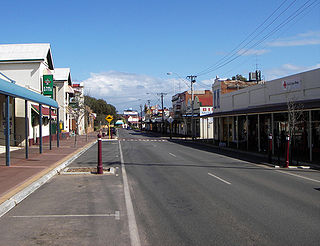History
George was born in Ashton, Northamptonshire, and emigrated to South Australia with his parents on the Ascendant in 1849. In 1858 his father, George Hunt Snr. (1806 – 22 August 1874), took up land (section 1197, Hundred of Onkaparinga) 3 km south-east of Norton Summit, which he subdivided to become the town of Ashton. [1]

Ashton is a village in South Northamptonshire about 1 mile (1.6 km) southeast of Roade village close to the Northampton to Milton Keynes A508, ca.3 miles (5 km) south of junction 15 of the M1 motorway, 6 miles (10 km) south of Northampton and 11 miles (18 km) north of Milton Keynes. The population of the civil parish at the 2011 census was 395. The village is about 67 miles (107.8 km) north of London via the M1 junction 15. The West Coast Main Line intersects the village on its eastern side.

The Hundred of Onkaparinga is a cadastral hundred of the County of Adelaide, South Australia, in the Adelaide Hills. It was proclaimed by Governor Frederick Robe in 1846 and named for the Onkaparinga River valley, which flows from north east to south west through the hundred.

Norton Summit is a town in the Adelaide Hills, South Australia, located approximately 12 km east of the city of Adelaide. The town is named after Robert Norton, who arrived in South Australia shortly after its proclamation, and made the first recorded climb in the area in 1836.
Around 1866 George started working in the drapery business in Adelaide, and around 1870 started his own shop, later entering into partnership with Samuel Corry (ca.1808 – 27 October 1896) as Hunt, Corry, & Co., with four large shops on Rundle Street opposite the Adelaide Arcade. George carried on business for two years after Corry's death, then retired. His business encompassed branches in Northam, Albany, Esperance Bay, and Perth.

Rundle Street is a street in the East End of the city centre of Adelaide, the capital of South Australia. It runs from Pulteney Street in the west to East Terrace, where it becomes Rundle Road.. Its former western extent, which ran to King William Street, was closed in 1972 to form the pedestrian street of Rundle Mall. The street is in proximity to the Adelaide Botanic Gardens, Rymill Park, Hindmarsh Square and North Terrace.

Adelaide Arcade is a heritage shopping arcade in the centre of Adelaide, South Australia. It is linked to, and closely associated with, Gay's Arcade.

Northam is a town in Western Australia, situated at the confluence of the Avon and Mortlock Rivers, about 97 kilometres (60 mi) east-northeast of Perth in the Avon Valley. At the 2016 census, Northam had a population of 6,548. Northam is the largest town in the Avon region. It is also the largest inland town in the state not founded on mining.
George Hunt purchased a substantial block of land on Magill Road, previously owned by George Morphett, where in 1898 he built the mansion "Tranmere House", surrounded by a magnificent garden. He was for many years a prominent member of the Pirie Street Methodist church.

George Morphett was a settler in the colony of South Australia, and younger brother of John Morphett.
Hunt was twice married; first to Elizabeth Guthrie (1846–1875): their children included Mrs. A. Scrymgour and Mrs. E. Cocking. His second wife was Eliza Ann Brusey (1854–1912); their family included Mrs. F. Wilson, Mrs. A. Campion, Miss Hunt, and Claude Hunt (1806–1874), who inherited and lived in Tranmere House. [2]




